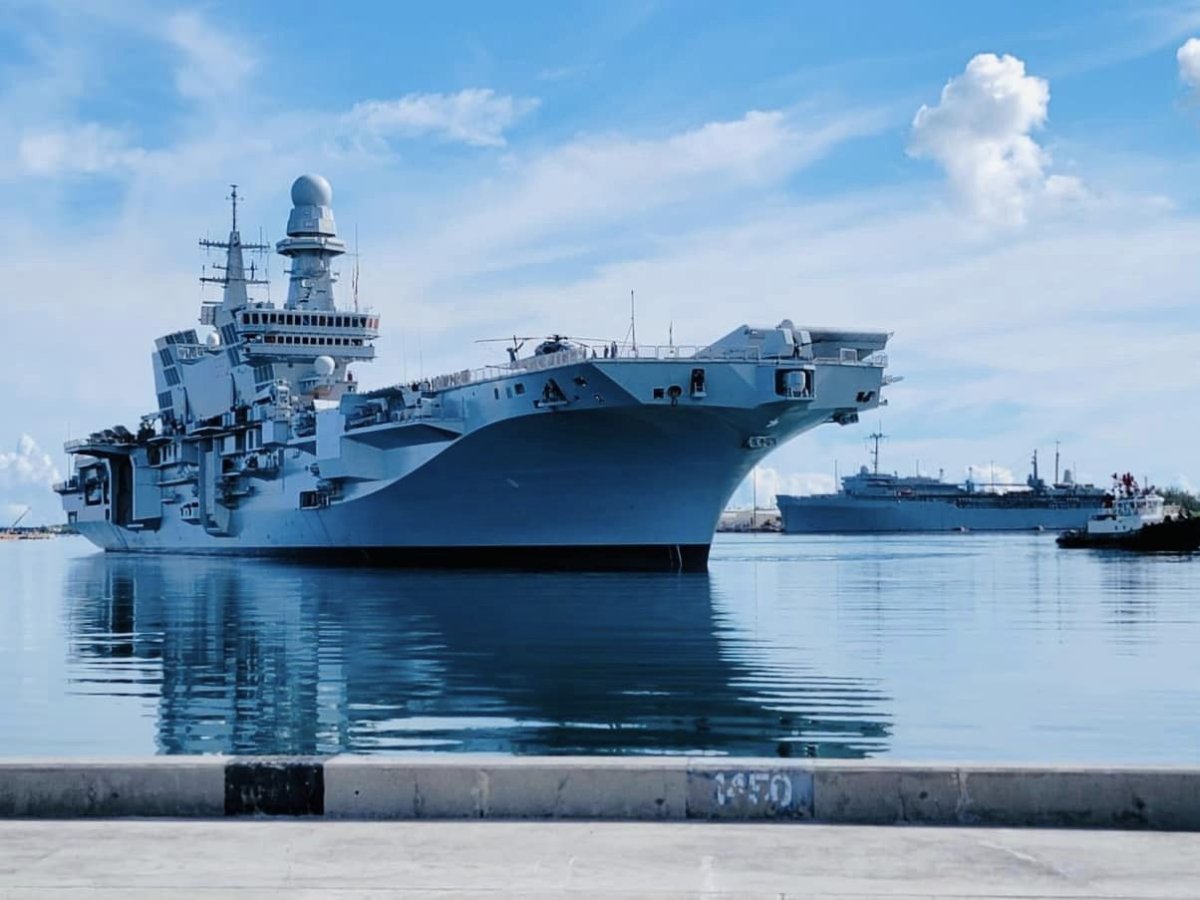A second U.S. Pacific Fleet aircraft carrier is accelerating its transit to the Middle East by order of Defense Secretary Lloyd Austin, creating another “carrier gap” in the Western Pacific.
Earlier this week, meanwhile, one of China’s three “flat-tops” trained for two days in waters near Taiwan and U.S. allies Japan and the Philippines, and NATO member Italy sent its carrier strike group to Guam.
Aircraft carriers are major platforms used by countries to project sea power in support of national interests and foreign policy in their immediate region and beyond. The U.S. has the most aircraft carriers in the world with 11 in service, and six of them are based in the Pacific. China has the second-largest carrier fleet.
Newsweek‘s weekly update maps U.S. and Chinese aircraft carrier movements in the strategic Indo-Pacific region. As of August 16, the locations of at least nine ships were publicly available via military disclosures or open-source satellite imagery.
U.S. Navy
USS Abraham Lincoln: Western Pacific Ocean
On Thursday, the Abraham Lincoln was photographed in the Singapore Strait as it departed the South China Sea via the Malacca Strait. The Lincoln has been ordered to the Middle East to support sister ship USS Theodore Roosevelt.
Both the Roosevelt and the Lincoln had sailed from the West Coast for scheduled deployments in the Pacific. They were retasked by the Defense Department amid heightened tensions between Israel and Iran.
USS Carl Vinson and USS George Washington: San Diego, California
The Carl Vinson returned to its home port at Naval Air Station North Island on Thursday after the conclusion of this month’s RIMPAC exercise off Hawaii. Observers had previously expected the Vinson to deploy to the West Pacific, but the Navy told Newsweek the ship was continuing “routine operations and training” near the West Coast.
The George Washington was still at Naval Air Station North Island as of Thursday, according to satellite photos. It conducted a hull swap with the USS Ronald Reagan in preparation for a forward deployment to Japan’s Yokosuka naval base this fall.
USS Nimitz and USS Ronald Reagan: Bremerton, Washington
Satellite imagery on Wednesday captured both aircraft carriers docked at Naval Base Kitsap’s Puget Sound Naval Shipyard in Bremerton in Washington state. The Ronald Reagan arrived a day earlier for scheduled maintenance after nine years as the Navy‘s forward-deployed aircraft carrier in Japan.

Puget Sound Naval Shipyard & Intermediate Maintenance Facility/Sentinel Hub
With no immediate flat-tops available for deployment to the Western Pacific, the Pentagon this week dismissed concerns about any shortage of American sea power in the region.
Andrew Lewis, a retired Navy admiral and now a non-resident fellow at the Center for European Policy Analysis, a Washington think tank, told Newsweek by email: “The force posture is being managed ably by the commanders.”
“The Secretary of Defense has finite resources and must make hard decisions that come with real risk to the warfighting readiness for the combatant commanders,” he said. “I am confident that the combatant commanders are managing the risk on the ground, on and under the sea, and in the air, space, and cyber with the assets they have assigned and allocated every minute of every day.”
America’s global network of allies and partners, particularly in the Pacific, was “without comparison in modern history,” said Lewis, who described it as a “key advantage.”
People’s Liberation Army Navy
CNS Liaoning: Qingdao, Shandong

Sentinel Hub
China‘s first operational aircraft carrier, the Soviet-built Liaoning, was still moored pierside at its home base in Qingdao on Tuesday, according to available satellite imagery.
CNS Shandong: South China Sea
The Shandong and three other Chinese navy warships were spotted conducting flight operations in the Philippine Sea on Monday, the Joint Staff Office under Japan’s Defense Ministry said in a report. The carrier group departed the area the next day and returned to the South China Sea.
CNS Fujian: Shanghai
The Fujian, the Chinese navy’s third and the most advanced aircraft carrier, remained at Shanghai’s Jiangnan Shipyard, where it was built, satellite photos showed on Thursday. The ship recently returned from almost one month of trials in the Yellow and Bohai seas off northeastern China.
Italian Navy
ITS Cavour: Guam
The aircraft carrier Cavour and the frigate ITS Alpino became the first Italian naval vessels to visit the U.S. Pacific territory of Guam on Sunday, arriving on the back of multilateral naval exercises off Australia and a dual carrier drill with the USS Abraham Lincoln.
The Italian strike group will visit Japan following its brief logistics stop at Naval Base Guam.

U.S. Navy
